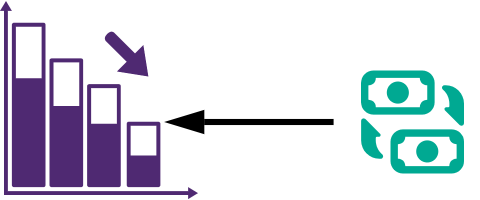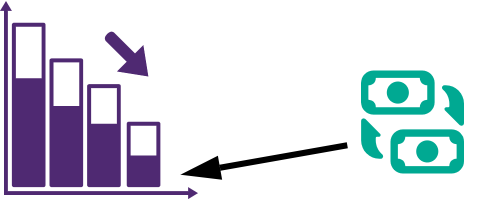Forex order types explained
Although small explanations of the order types are more or less enough for experienced traders that have touched the markets at least once, it’s not enough for those who have had no experience trading FX or any other assets.
So, in this paragraph, let us try and truly dive into every single order type and explain it as much as possible. Every order type has its goal but sometimes they can be pretty similar, which is why it is sometimes confusing. But there’s not much to worry about, a glance through the details should be enough for most traders to truly understand these orders.
What is a market order?
A market order is when a trader opens a position with the current market price of an asset. For example, imagine that the USD/JPY exchange rate is 109.7. You believe that the price will not go any further down for this Forex pair, so it’s a good time to enter the market. Since you don’t have to wait for anything, you simply put a market order, which opens a trade with the current exchange rate of the asset. Once the trade is open, it starts being affected by all the price changes and fluctuations of the market.

If the market goes against your prediction, meaning if the exchange rate goes below 109.7, then you will see a loss, but if it goes exactly how you predicted, meaning above 109.7 then you will see some payouts.
That’s about all there is to market orders. It’s just a position you open with the current exchange rate of an asset.
What is a limit order?
A limit order is a bit trickier than a market order. It’s basically a feature that helps you plan for future changes in the market.
For example, let’s imagine that the USD/JPY exchange rate is still 109.7, but you soon find out that Japan will release its economic performance document next week. You believe that the results are going to be bad, which means the exchange rate is going to decrease to around 107.1.
This would mean that you would wait for the document to be released, but next week you may not be home. This is the case where a limit order would be very useful. The way limit orders Forex work is that you tell the broker to open a position for you when the exchange rate reaches 107.1. This helps traders who know that the exchange rate is going to fall in the future, avoid any potential losses even though they want to trade. It’s like planning ahead and getting the most out of your trades.

The same works for sell orders on
CFDs when you think the price is going to increase in the future.
Now let’s talk about the sub-types that come with limit orders in a sense.
What are OCO orders?
OCO order stands for “one cancels the other order”. It’s one of the few unique types of orders in Forex that allow having two orders open at once. Let’s try and explain it with another example but this time with a CFD of a company’s stock.
Let’s say that you have 10 shares of company X which are worth $10 each. You believe that there’s a chance for the price to increase to $25 because the company just signed a new contract with the government. However, there’s also a chance that the price will decrease if they fail. So, you open two orders. A take-profit order when the price reaches $25 and a stop-loss order when the price reaches $8. You then get a chance to trigger the OCO order. If the price reaches $25, your position will be closed as you sell the shares, and the OCO order will cancel the stop-loss order immediately.
The way these orders with CFDs work is pretty similar to Forex as well. Usually, traders will place an OCO order with very small gaps. Right now we had an example of a large gap, but a more realistic OCO order would look something like this:
- Take profit at $25
- Stop loss at $23
It’s quite close, but it’s something that sometimes guarantees payouts for traders, but it’s quite risky as well.
What is a stop order?
A stop order does pretty much what it says in the name. It stops the order when conditions are met. Many would say that these FX orders are the most common in the market but that is still debatable.
Both
stop-loss and take-profit orders are part of stop orders, because they, as the name suggests, stop the order once a certain condition is met. It’s pretty easy to understand really.